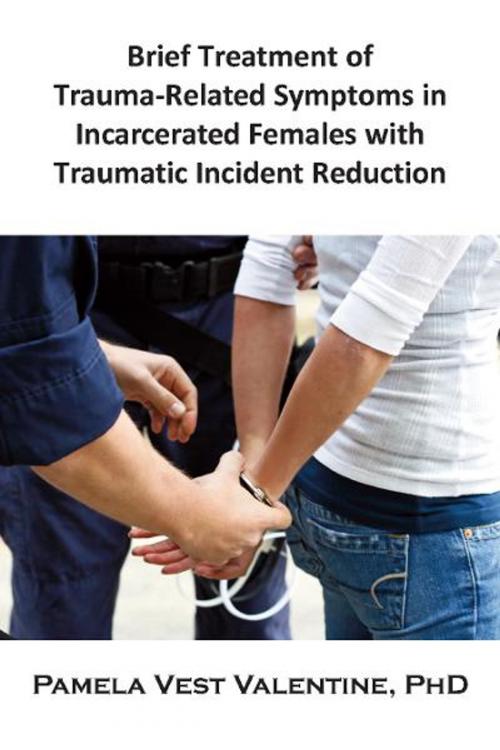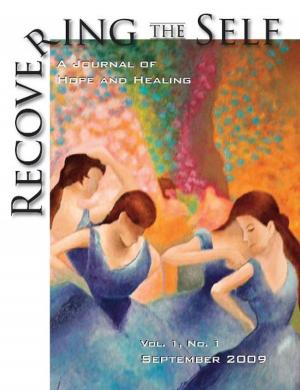Brief Treatment of Trauma-Related Symptoms in Incarcerated Females with Traumatic Incident Reduction (TIR)
Nonfiction, Health & Well Being, Psychology, Counselling, Mental Illness, Social & Cultural Studies, Social Science, Gender Studies, Women&| Author: | Pamela V. Valentine | ISBN: | 9781615990801 |
| Publisher: | Loving Healing Press | Publication: | March 1, 2011 |
| Imprint: | Language: | English |
| Author: | Pamela V. Valentine |
| ISBN: | 9781615990801 |
| Publisher: | Loving Healing Press |
| Publication: | March 1, 2011 |
| Imprint: | |
| Language: | English |
The following article is based on materials presented at the Proceedings of the Tenth National Symposium on Doctoral Research in Social Work (1998).
Statement of the Research Problem
Conducted in the Tallahassee Federal Correction Institute (FCI) in Florida, this experimental outcome study examined the effectiveness of Traumatic Incident Reduction (TIR) (Gerbode, 1989) in treating trauma-related symptoms of female inmates who were victims of interpersonal violence. TIR is a brief (in this case, one session), straightforward, memory-based, therapeutic intervention most similar to imaginal flooding. A memory-based intervention implies that the symptoms currently experienced by a client are related to a past event and that lasting resolution of those symptoms involves focusing on the memory rather than focusing on symptom management. TIR is straightforward in that the roles of both the client and therapist are very clearly defined and strictly followed.
There are several reasons for studying the influence of TIR on previously traumatized female inmates. Since 1980, the rate of family homicide has increased fivefold (Joffe, Wilson, & Wolfe, 1986). Women are the target of much violence, as illustrated by the following: 75% of adult women have been victims of at least one sexual assault, robbery, or burglary (Resnick, et al., 1991); and 53.7% are victims of more than one crime. Abundant data suggest that PTSD can result from having been a victim of crime or having witnessed a violent crime (Astin, Lawrence, & Foy, 1993; Breslau, Davis, Andreski & Peterson, 1991; Resnick, et al., 1991). Therefore, the number of women affected by PTSD is growing as violence and sexual abuse increase in society as a whole (Ursano & Fullerton, 1990). There is a lack of empirical research on the traumatic effects of interpersonal violence (e.g. robbery, rape, incest, physical assault). Since inmates are typically victims of interpersonal violence (Gabel, Johnston, Baker, & Cannon, 1993), the inmate population studied was particularly suitable for TIR. For more information on TIR, see www.TIR.org
The following article is based on materials presented at the Proceedings of the Tenth National Symposium on Doctoral Research in Social Work (1998).
Statement of the Research Problem
Conducted in the Tallahassee Federal Correction Institute (FCI) in Florida, this experimental outcome study examined the effectiveness of Traumatic Incident Reduction (TIR) (Gerbode, 1989) in treating trauma-related symptoms of female inmates who were victims of interpersonal violence. TIR is a brief (in this case, one session), straightforward, memory-based, therapeutic intervention most similar to imaginal flooding. A memory-based intervention implies that the symptoms currently experienced by a client are related to a past event and that lasting resolution of those symptoms involves focusing on the memory rather than focusing on symptom management. TIR is straightforward in that the roles of both the client and therapist are very clearly defined and strictly followed.
There are several reasons for studying the influence of TIR on previously traumatized female inmates. Since 1980, the rate of family homicide has increased fivefold (Joffe, Wilson, & Wolfe, 1986). Women are the target of much violence, as illustrated by the following: 75% of adult women have been victims of at least one sexual assault, robbery, or burglary (Resnick, et al., 1991); and 53.7% are victims of more than one crime. Abundant data suggest that PTSD can result from having been a victim of crime or having witnessed a violent crime (Astin, Lawrence, & Foy, 1993; Breslau, Davis, Andreski & Peterson, 1991; Resnick, et al., 1991). Therefore, the number of women affected by PTSD is growing as violence and sexual abuse increase in society as a whole (Ursano & Fullerton, 1990). There is a lack of empirical research on the traumatic effects of interpersonal violence (e.g. robbery, rape, incest, physical assault). Since inmates are typically victims of interpersonal violence (Gabel, Johnston, Baker, & Cannon, 1993), the inmate population studied was particularly suitable for TIR. For more information on TIR, see www.TIR.org















